Continuing up on my main blog post around using Raspberry Pi4b devices with the vSphere Fling, my first use case involves create a 2-node vSAN cluster on these devices using a virtual remote witness. Here’s how I set this up in my homelab.
Assuming you already have 2 Raspberry Pi4b devices installed and configured with the vSphere fling using the instructions linked in the main blog post above, I added vSAN to the vmkernel port that I also have the management network configured to make it simpler to setup both devices.
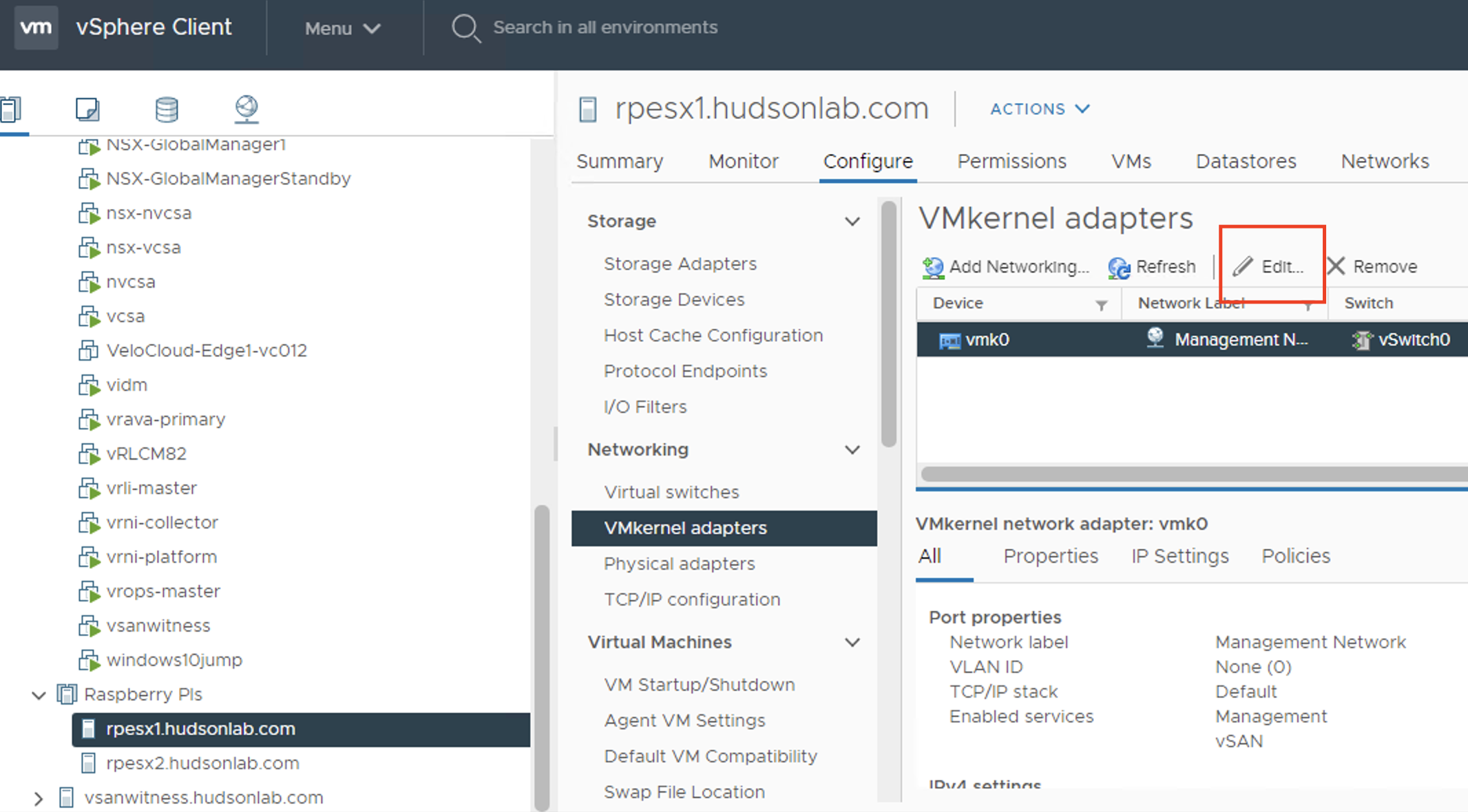
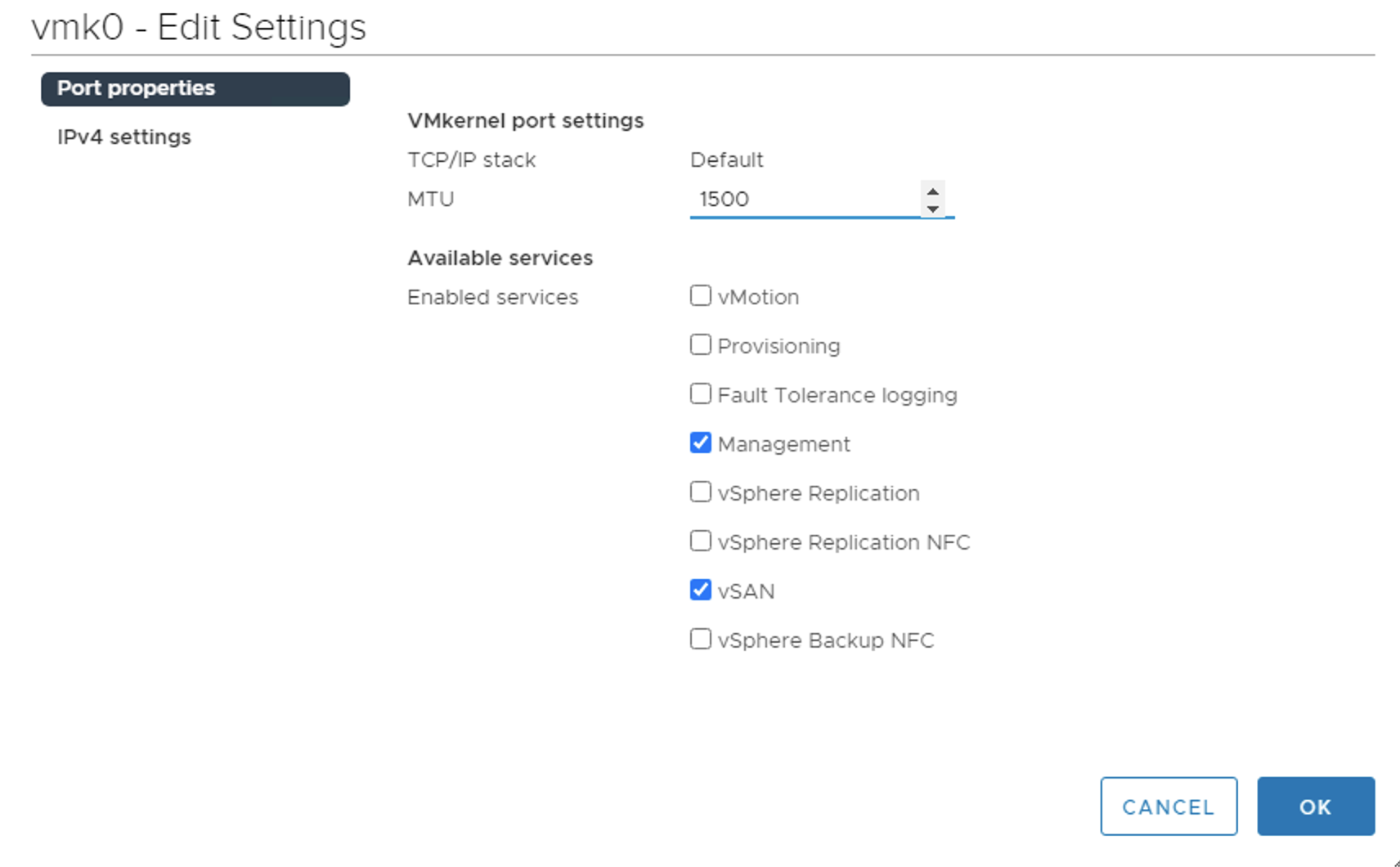
I’ve also deployed a virtual vSphere host as my vSAN witness server as shown above using William Lam’s content library I have configured on my vCenter server. Same setup as above adding the vSAN service to my vmkernel port that I also have my management network configured.
Next up, adding some flash drives to the Raspberry PIs for cache and capacity drives. I have two Kingston DTSE9 8 GB flash drives and two EMTEC 8GB Flash Drives I’ll be using, one of each plugged into both of the RP4s.
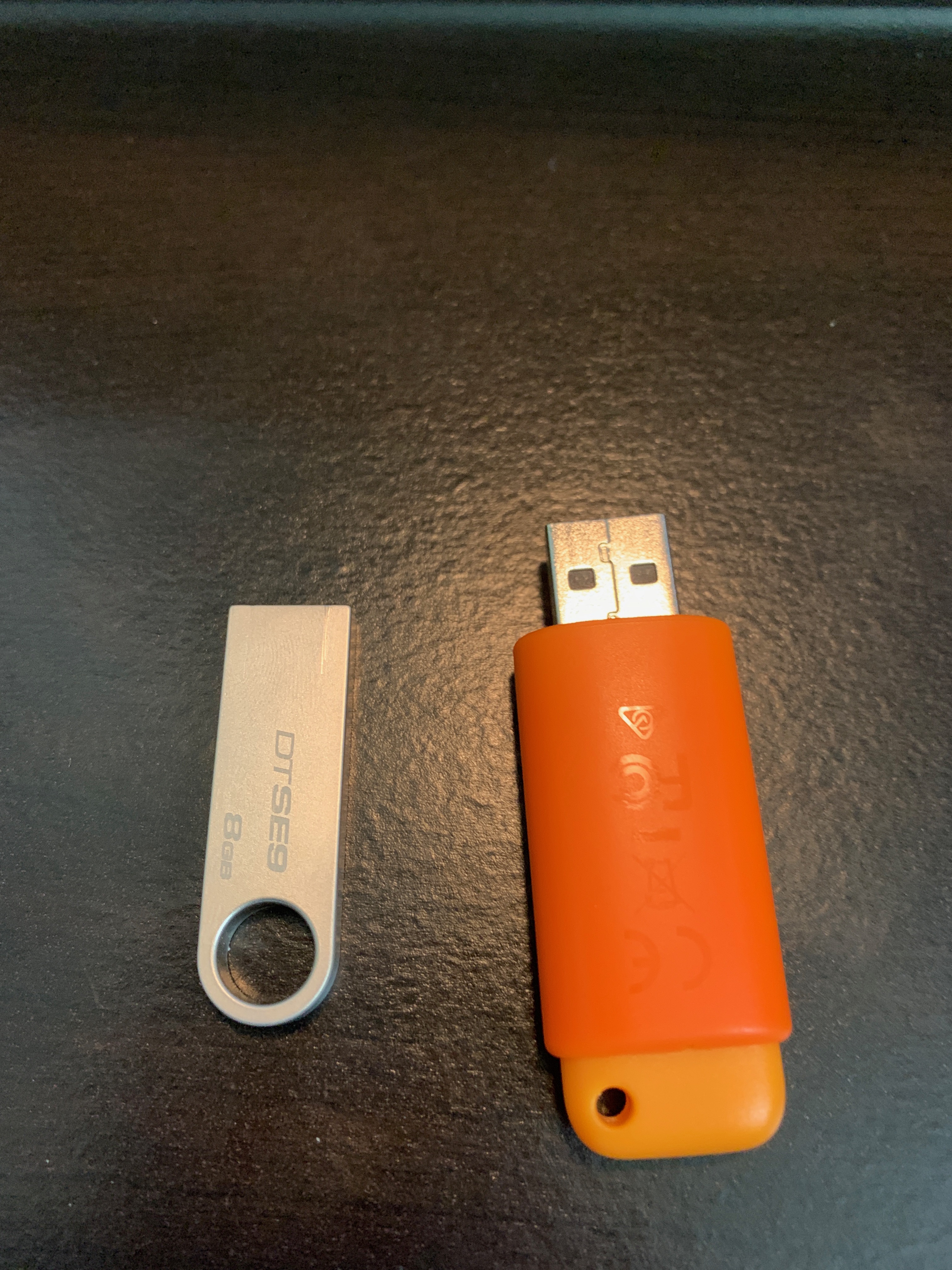
I decided to format all the flash drives first on my Mac in order to make sure they were clean. The process I used was the same for all 4 flash drives using the disk management utility and erasing each drive formatting as fat which I’ll eventually erase within the config option in vCenter. (Examples given 1 for each type of flash drive)
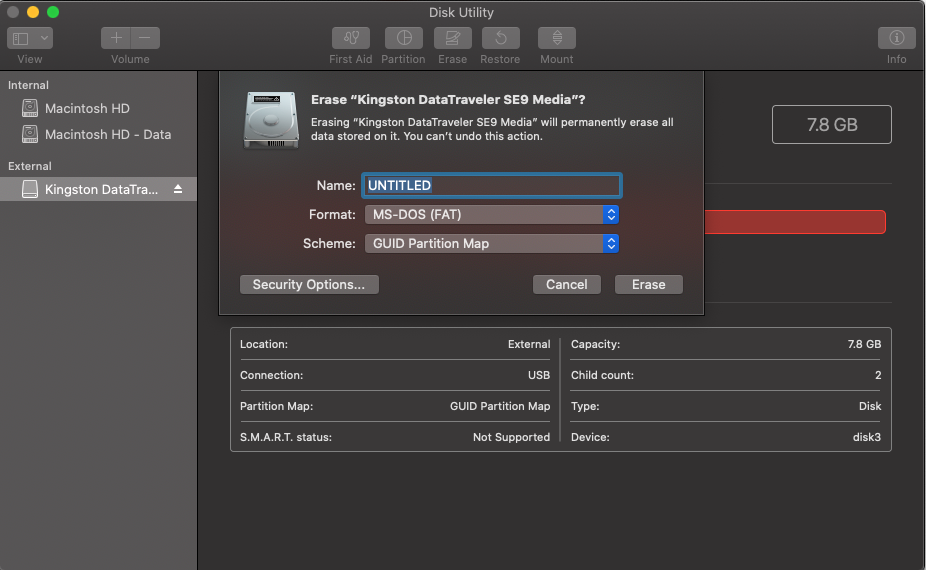
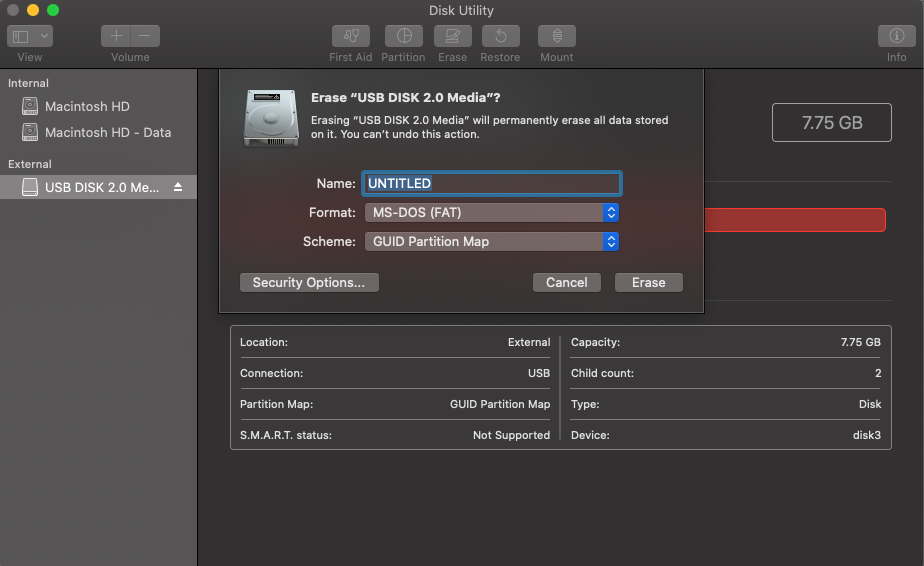
Once all 4 drives have been formatted, I plugged on of each into the RP4s. In order to see them as storage devices, I needed to trick ESXi into seeing them as USB drives by killing the usb arbitrator service. This can be done by SSH into each RP4 and running the following command.

I then added the advanced configuration to each RP4 vSphere host in order to allow the devices to be seen by vSphere as a USB storage device and prevent the usb arbitrator service from running upon restart of the host by adding these options with a value of 1.
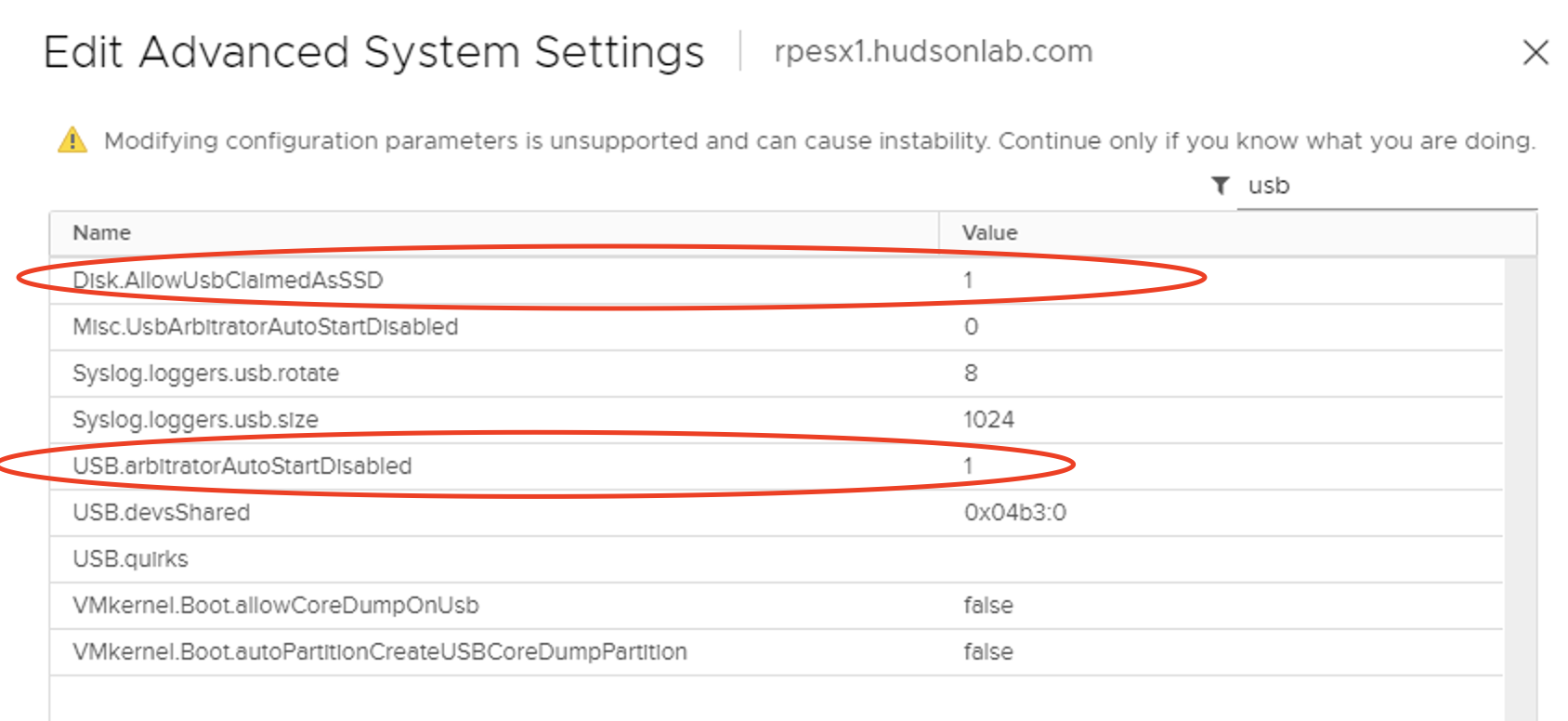
Next up, viewing the USB storage devices, erasing the partitions on each flash drive and marking them as Flash Hard Drives for use with vSAN. After plugging in the flash drives as seen below, in vCenter, I’m selecting each RP4 ESX host and looking at the storage devices in order to tag them as flash disks and erase the partitions so they’ll be ready to use as disks for vSAN.
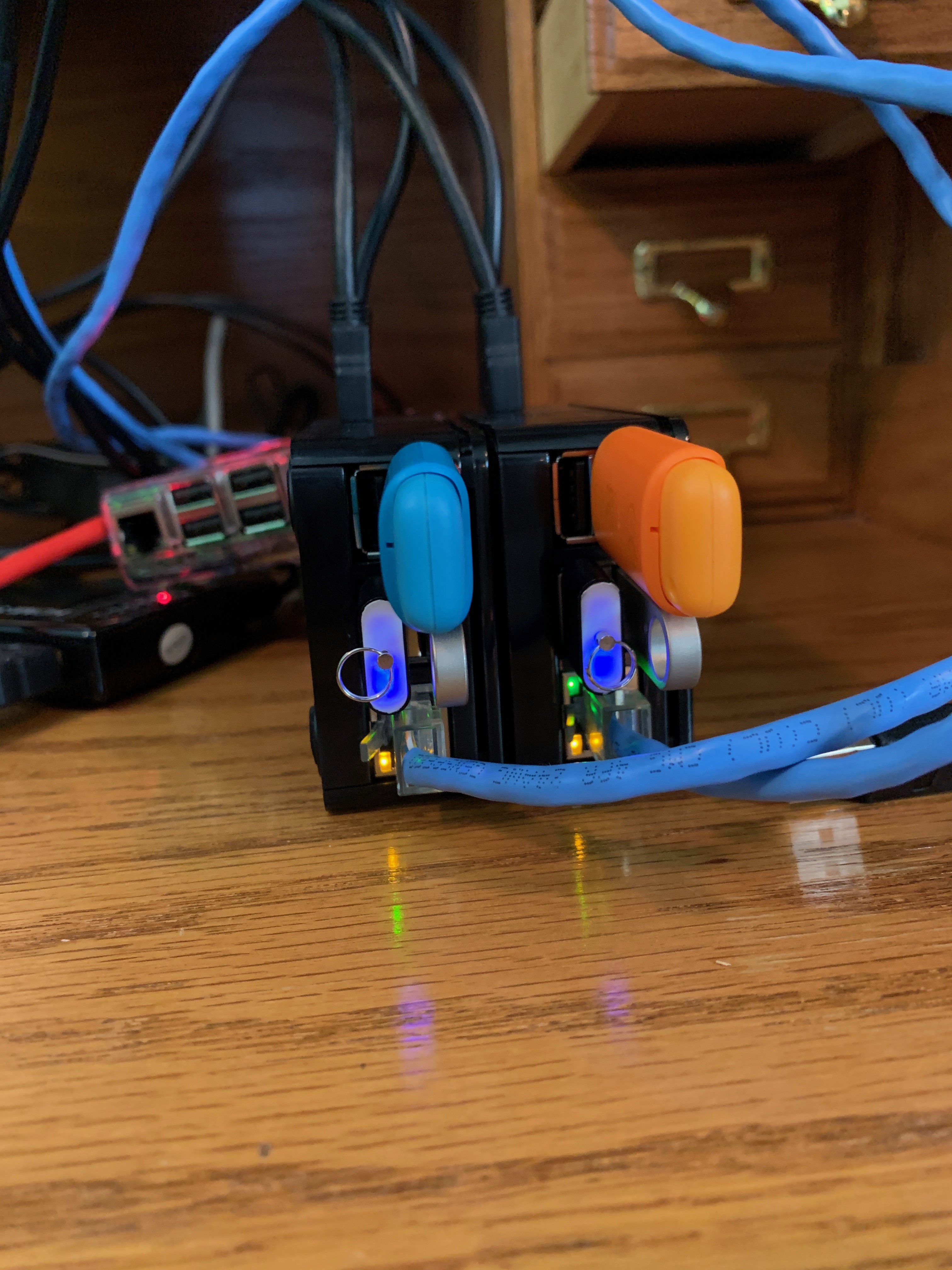
Selecting each ESX host and going to the Configure Tab, under Storage, under Storage Devices, the drives should appear now as HDD disks and FAT formatted, so I’ll mark them as flash drives and erase the partitions.


I’ll erase partitions first and then mark as flash and do this for each drive on both RP4 hosts.
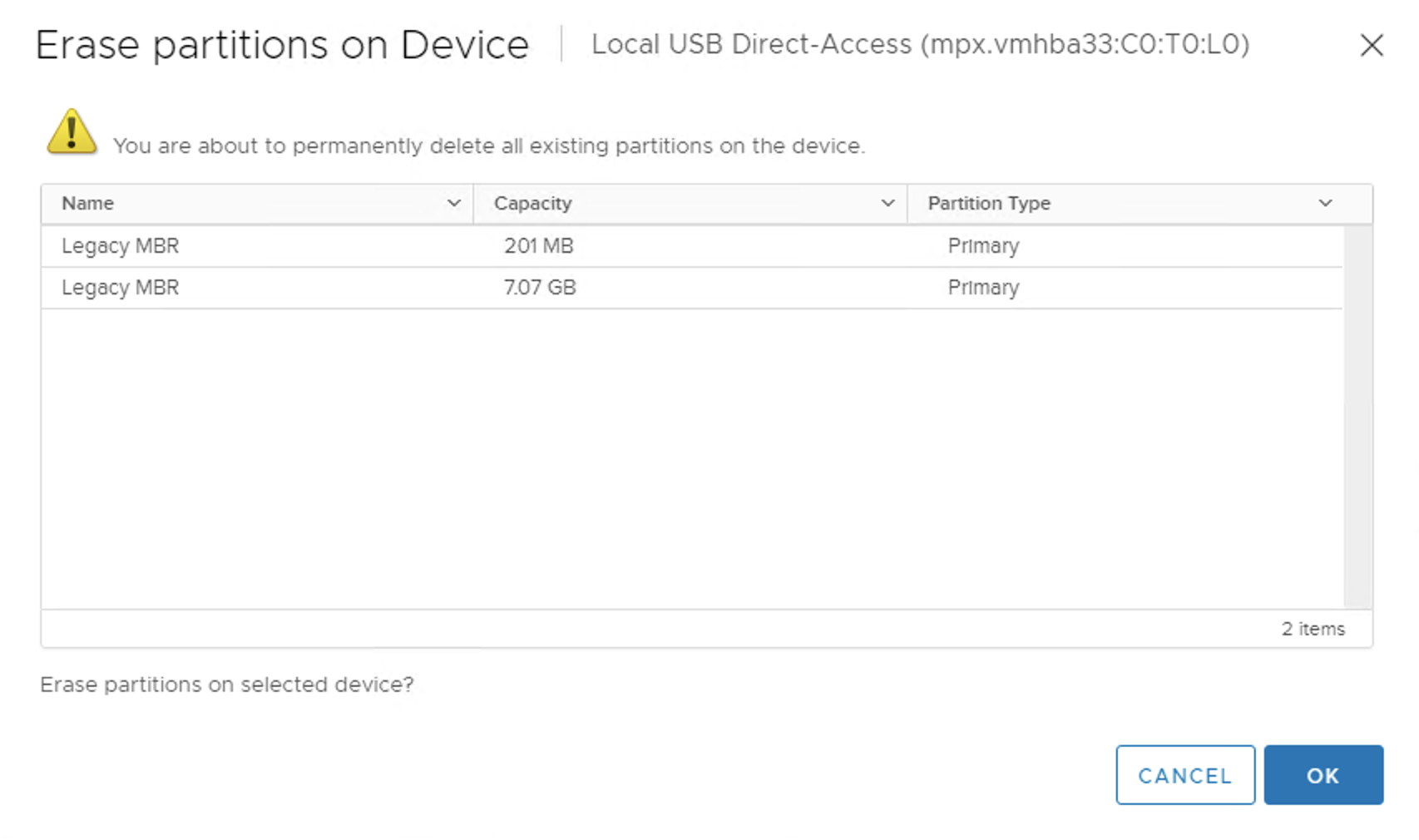
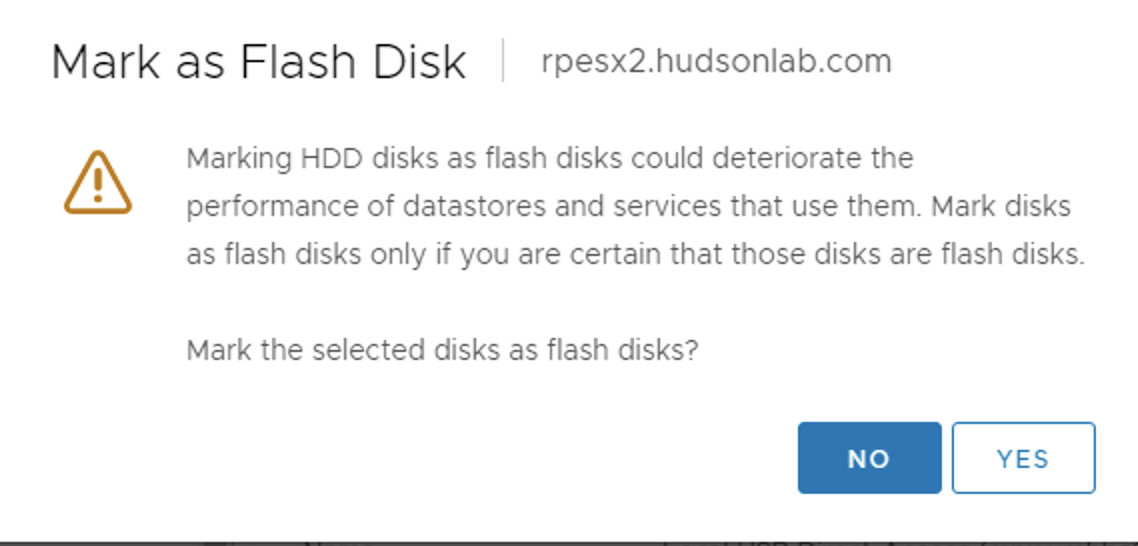

Fast forward, both RP4 hosts with two USB drives with erased partitions both marked as flash and ready to create a 2-node vSAN cluster. Turning on vSAN at the cluster level, I’ll choose the 2-node option and use a virtual vSphere host as my witness as mentioned previously.
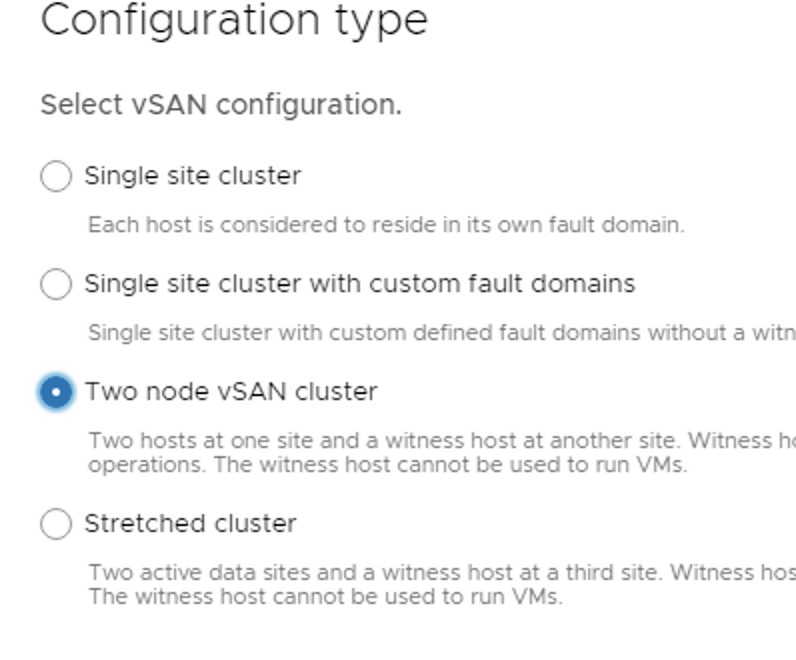
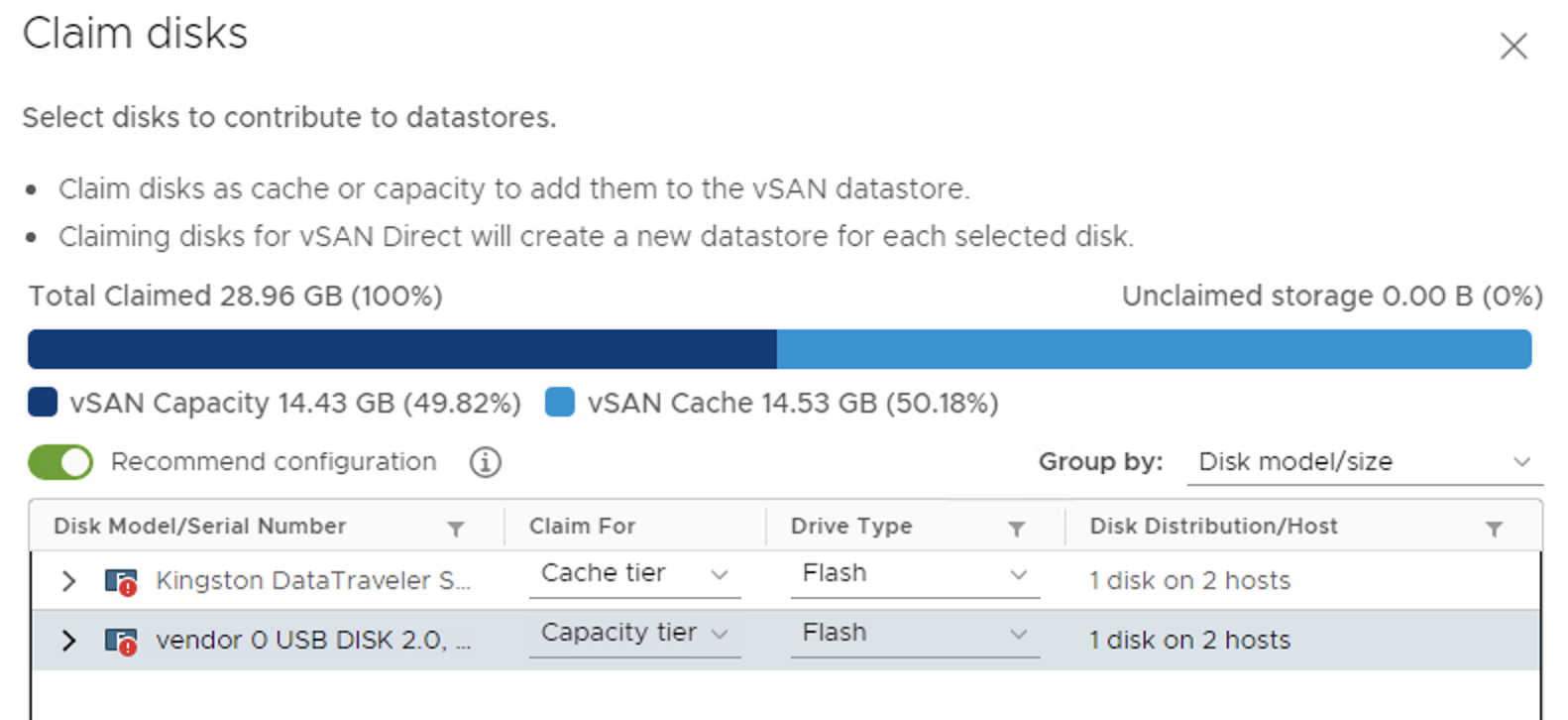
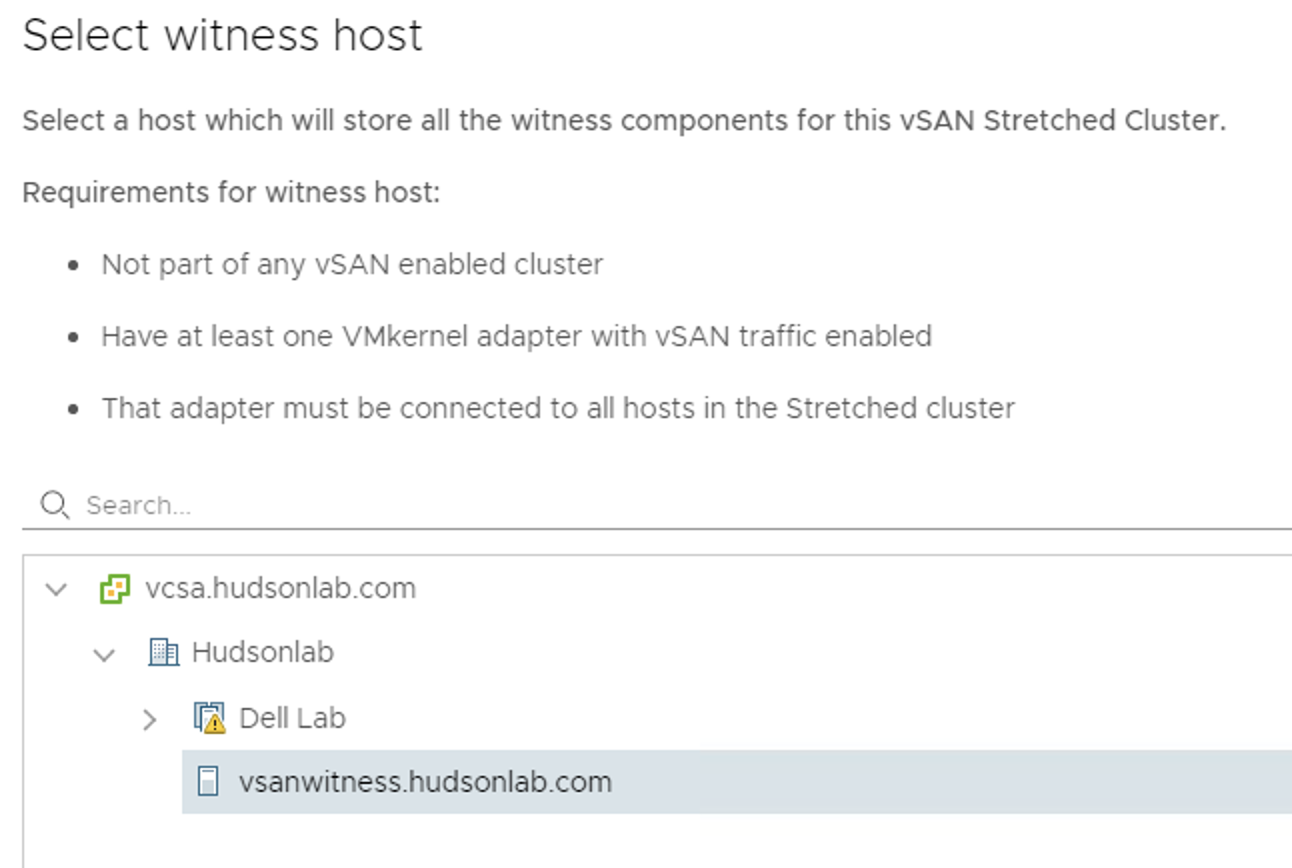
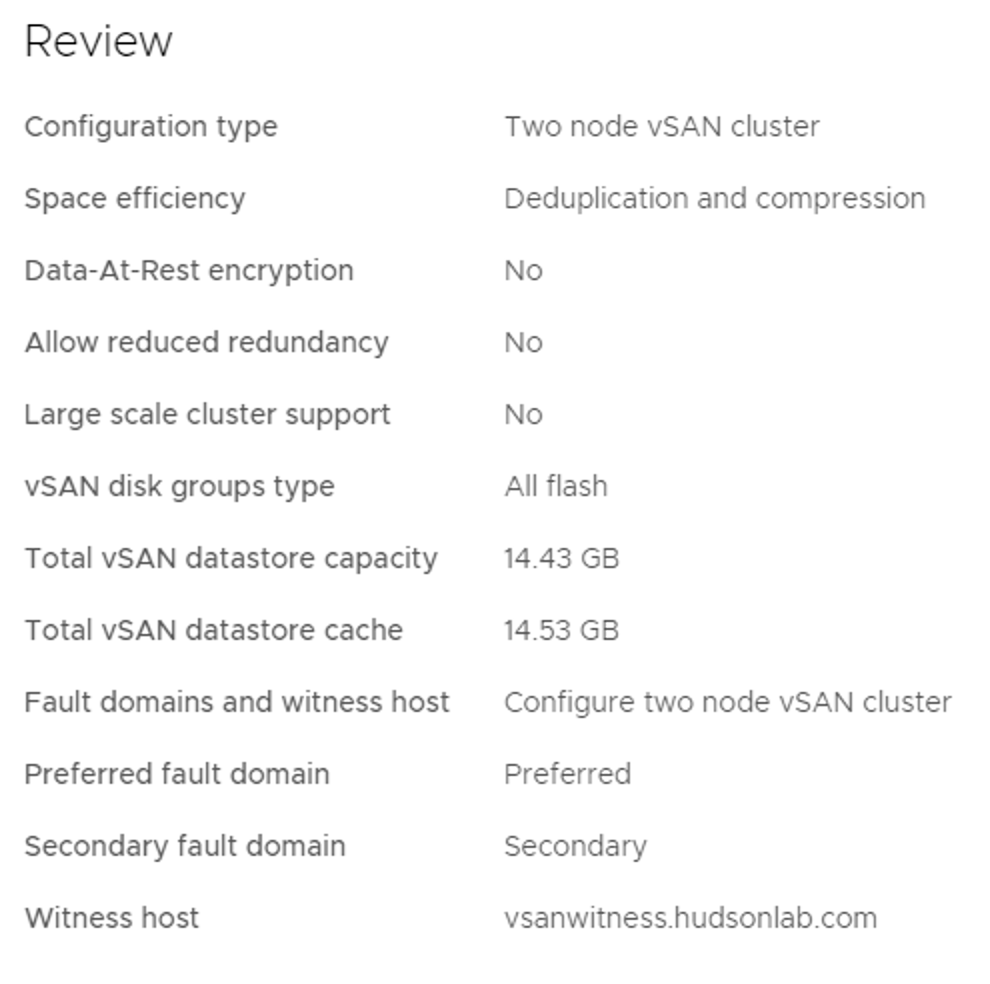
Once completed, I now have a 2-node vSAN cluster running on 2 RP4s running ESXi with a virtual remote witness host to complete the process.
(**NOTE – don’t forget to install a license for vSAN if you want to use it for an extended period of time)


Thanks for the write up – looks like a fun little project!
I’m interested to hear what the performance of the vsan volume is like, and any thoughts on the longevity of the flash drives…
Thanks for the write up – looks like a fun little project!
I’m interested to hear what the performance of the vsan volume is like, and any thoughts on the longevity of the flash drives…
I thought’d I’d have a go at this, but so far I’m failing to add the witness – I keep getting a “Cannot complete the operation. See the event log for details. Failed to add witness host to a stretched cluster.”
From what I’ve read this could be to do with VCSA/ESXi/VSAN versions. Would you be willing to share the versions and build numbers of your VCSA, Witness and VSAN hosts so I can compare?
Many thanks!!
The blog post https://gr8n8tr0n.cloud/2020/10/12/esxi-on-raspberry-pi/ has screenshots of the host version I was using from the initial release of the ESXiOnArm Fling which was ESXi7 build 16966451 and the witness node was running the vSAN witness appliance for that same build of vSphere.
I thought’d I’d have a go at this, but so far I’m failing to add the witness – I keep getting a “Cannot complete the operation. See the event log for details. Failed to add witness host to a stretched cluster.”
From what I’ve read this could be to do with VCSA/ESXi/VSAN versions. Would you be willing to share the versions and build numbers of your VCSA, Witness and VSAN hosts so I can compare?
Many thanks!!
The blog post https://gr8n8tr0n.cloud/2020/10/12/esxi-on-raspberry-pi/ has screenshots of the host version I was using from the initial release of the ESXiOnArm Fling which was ESXi7 build 16966451 and the witness node was running the vSAN witness appliance for that same build of vSphere.